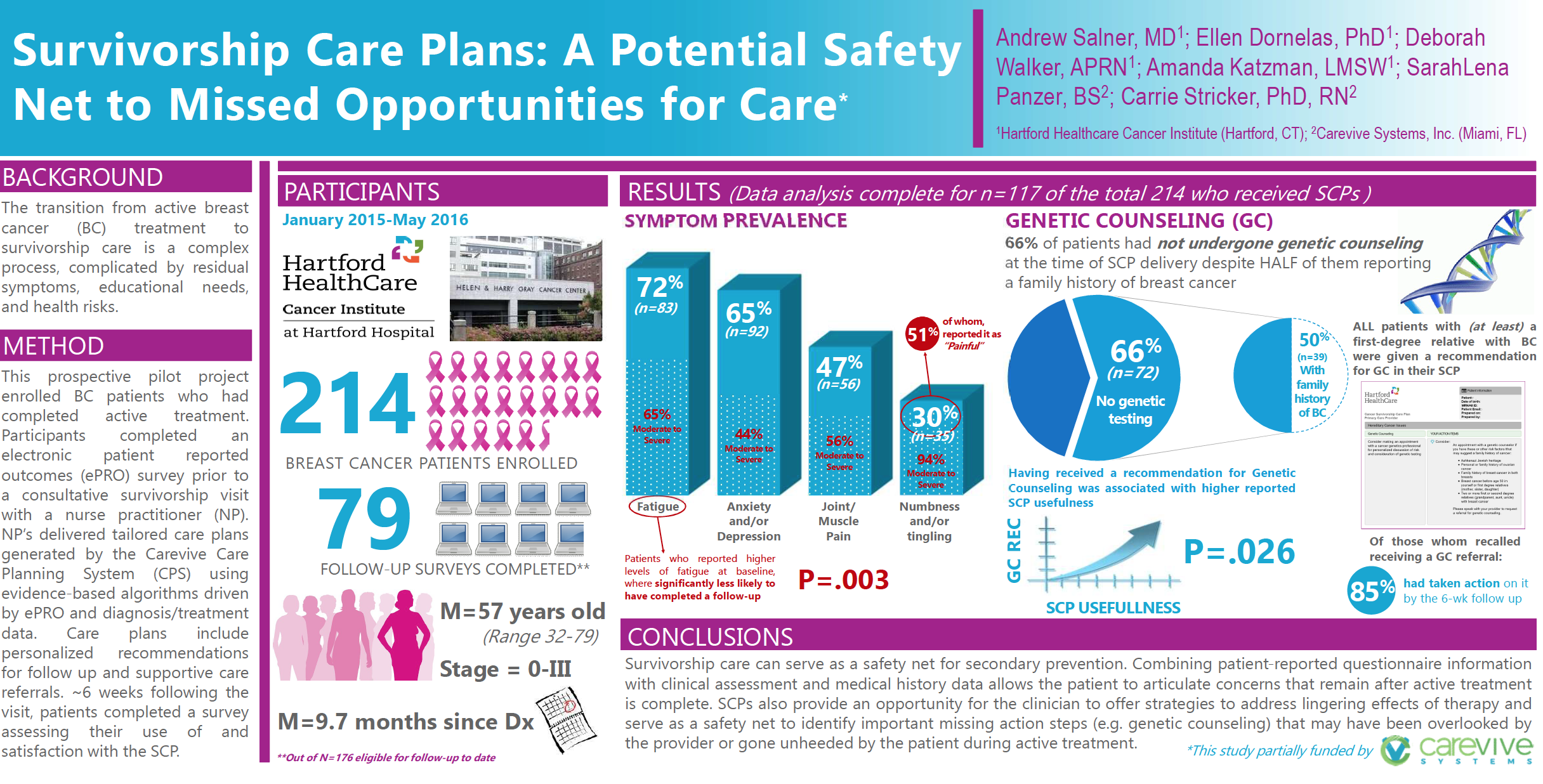
Survivorship Care Plans: A Potential Safety Net to Missed Opportunities for Care
Andrew Salner, MD1; Ellen Dornelas, PhD1; Deborah Walker, APRN1; Amanda Katzman, LMSW1; SarahLena Panzer, BS2; Carrie Stricker, PhD, RN1
1Hartford Healthcare Institute (Hartford, CT); 2Carevive Systems, Inc. (Miami, FL)
Background
The transition from active breast cancer (BC) treatment to survivorship care is a complex process, complicated by residual symptoms, educational needs, and health risks.
Method
This prospective pilot project enrolled BC patients who had completed active treatment. Participants completed an electronic patient reported outcomes (ePRO) survey prior to a consultative survivorship visit with a nurse practitioner (NP). NP’s delivered tailored care plans generated by the Carevive Care Planning System (CPS) using evidence-based algorithms driven by ePRO and diagnosis/treatment data. Care plans include personalized recommendations for follow up and supportive care referrals. ~6 weeks following the visit, patients completed a survey assessing their use of and satisfaction with the SCP.
Conclusions
Survivorship care can serve as a safety net for secondary prevention. Combining patient-reported questionnaire information with clinical assessment and medical history data allows the patient to articulate concerns that remain after active treatment is complete. SCPs also provide an opportunity for the clinician to offer strategies to address lingering effects of therapy and serve as a safety net to identify important missing action steps (e.g. genetic counseling) that may have been overlooked by the provider or gone unheeded by the patient during active treatment.




